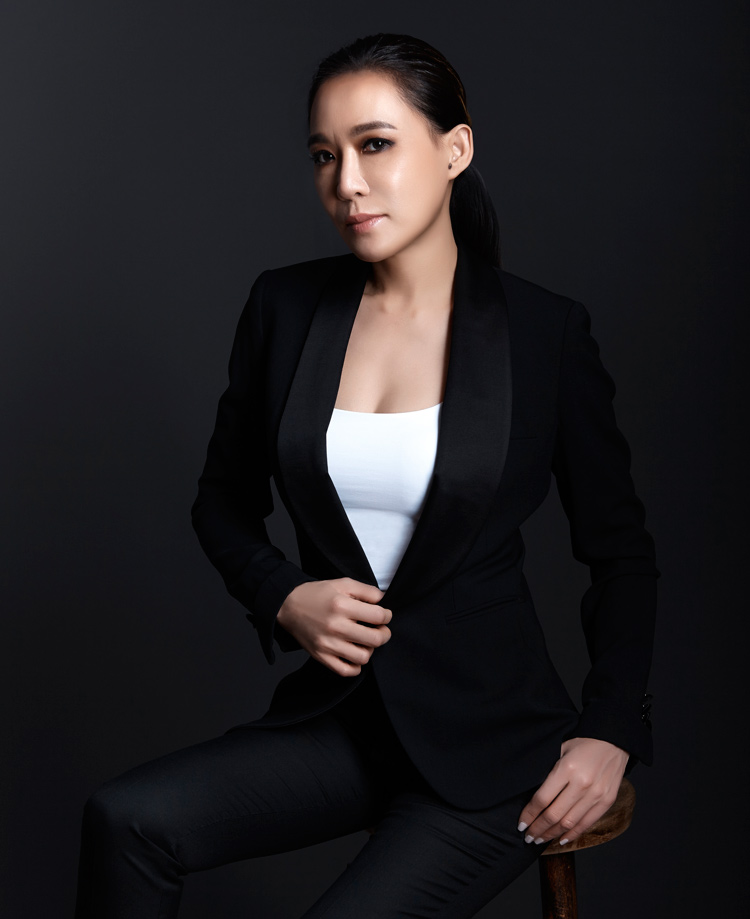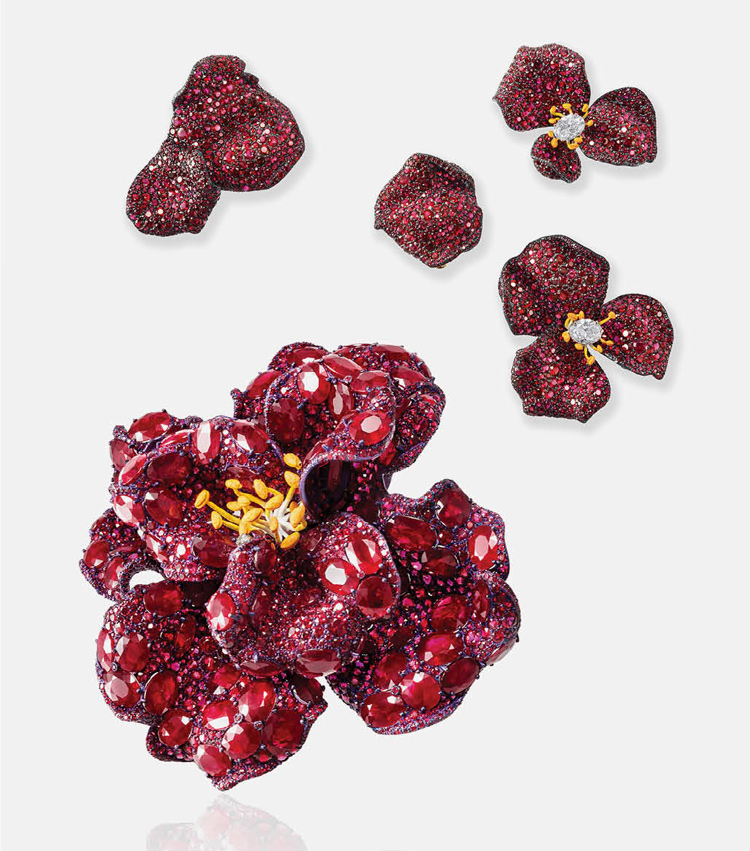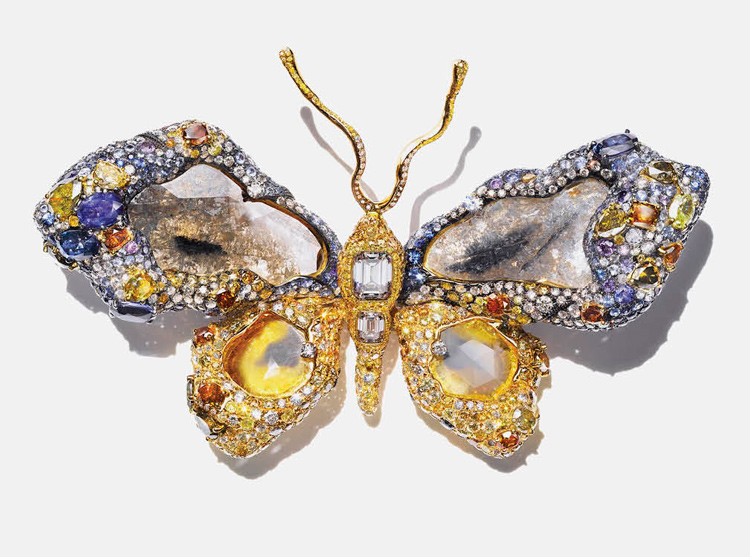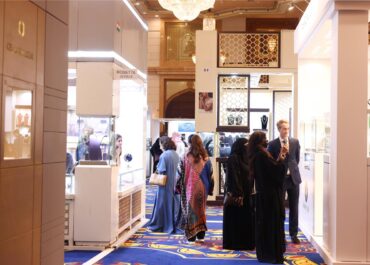Cindy Chao does not consider herself to be a jeweller – instead she would define herself as an artist – one that is simply creating jewels rather than art or sculptures. And it is with this unique ideology that the Taiwanese creator founded her jewellery house Cindy Chao: The Art Jewel.
Growing up in a family of sculptures Cindy Chao was used to being around creative influences and this inspired her from a young age. Knowing that she always wanted to be an artist of some sort, Cindy studied in New York before travelling back to her home country to launch her jewellery house in 2004. Cindy has an unusual technique of creating 3D wax moulds of her designs rather than sketches, something she believes allows for more accuracy and detail in her designs.
Cindy’s fine jewellery collections are highly sought after at auctions around the world and are often sold for extravagant amounts of money. In 2009, De Beers Forevermark Cindy Chao was one of the twelve chosen artists to create a jewellery pieces for the launch of its Precious Collection. Chao created the Majestic Beauty Fan – a piece containing 2,399 diamonds and weighing a total of 310.27 carats. The piece is now featured in exhibitions around the world.
Cindy Chao’s Black Label Masterpieces use some of the rarest gemstones in the world. Combined with Chao’s extravagant designs the Black Label Masterpieces are limited edition pieces that can only be viewed at exhibitions or private events. They are some of the most unique jewellery creations in the world.
Here Cindy discusses her unique approach to jewellery design and how as a female businesswoman she is taking her brand to the next level.
What do you want everyone to know about your brand?
I believe that every piece of fine jewellery should be a miniature work of art. The core philosophy of Cindy Chao The Art Jewel is to break boundaries between jewellery and art, thereby redefining how jewellery pieces may be perceived and appreciated.
Your designs are very extravagant – how do you even begin to come up with the ideas?
I believe that inspiration is an accumulation of one’s life experience, sensibility and passion. As an artist and a global traveller, I believe that art is something powerful that can break down the barriers of religion, race, nationality, age, culture, etc. The energies I invest in my artworks can be said to originate from this. So instead of finding inspiration purposely, I let inspiration come to me at however tiny moment in my life. The ocean’s mesmerising blue and green colours that greeted my eyes in a snorkelling expedition in Phuket (this experience inspired my Aquatic collection!); the splendid cliffs at sunset I witnessed in an olive yard in Majorca; the magnificently pure white snow in Gstaad… These experiences fulfilled my mind, and like chemical reactions they motivate my design when the moment comes.
How do you think your childhood inspired you for what you do today?
Creating art jewels, for me, is a continuation of my family heritage. As a child, I was surrounded by creativity and most of my days were spent with two masters. My grandfather was a noted architect whose many works are now considered historical monuments. He always took me to the construction sites of his architectures, and therefore I was trained from a young age to see the world in a structural and spatial way. My father was a sculptor. He taught me to take into account each angle, form and expression of what I observe, and to transform observations into well-rounded creations.
If you weren’t working with jewellery what would you do?
When I was young, I aspired to be an architect like my grandfather. Later when I decided to study in New York, I wanted to study architecture as well. It was my mother who gave me a push then to use my creative talent into a profession that she found more feminine. So instead of stones and timber, I chose precious gemstones and metals. To my surprise, I discovered that architecture and jewellery share similar characters. Colours, structure, layers, space, light, curves and turns… these are the terms I grew up familiar with which are also used to describe different elements in the world of jewellery. They bring me fascination again and again, and I cannot help but immerse myself in this three-dimensional art of jewellery. Most importantly, when I learnt about the ancient wax sculpting technique, I realized how I could extend my passion for architecture to jewellery design. The technique allowed me to make miniature sculptures in the same way architects design buildings. Although the media of my expressions are different from my father’s and my grandfather’s, the spirit is one and the same, and the family legacy is passed on.
What do you think makes your approach to jewellery unique?
My jewellery pieces are organic, sculptural and architectural. This is made possible thanks to the wax sculpting technique. This traditional artisan skill widespread in Europe in the 18th-19th centuries allows me to envision my final work on a one-to-one real size wax model in three-dimension and, most importantly, to meticulously perfect every inch of the contour, adding soft and elegant touch to my jewels. On the wax, I can structure the piece in detail from every angle, giving it the rich depth and texture that a simple design sketch could never contain. Through this process I am able to encapsulate my thoughts, my emotions and life stories into my creation. In the end, I believe these are the “soft” elements that continue to make my creations unique.
You consider yourself an artist rather than a jeweller – how do you think the two differ and what is the difference between a piece of jewellery and a work of art?
One key difference between jewellery design versus other forms of creation, such as a painting or sculpture, is that the first uses various precious materials while maintaining the functionality of the piece. There is a physical interaction between the jewellery and the wearer. A good jewellery design must therefore compliment the wearer and become an extension of the body and personality. If the piece is meant to be worn as a necklace, a jewellery designer must know the ins and outs of the human neckline. Design and weight are highly considered in this instance; the necklace is tested on various models during the creative process to study how the necklace will be crafted to lay beautifully on the neckline and to provide the most comfortable form of wear. There is however an additional characteristics that are unique in Cindy Chao The Art Jewel: it blurs the lines between jewellery as an adornment and as fine art, building up the bridge between the two with my genuine emotions. Such emotions also connect the wearer of my jewels and me as an artist. In my works, my collectors are able to feel the energies I have invested and witness the exquisite craftsmanship by which the jewels were realized. I consider such intimate sentiments shared by both the creator and the collectors to be the value of art. Such sentiments make my jewellery pieces transcend their function and become artworks.
It fuses the best of two worlds – functionality and aesthetics. Not only do I lean towards the wearability of an object, but also focus on emotional connections. All of my creations are an extension of myself. They materialize my soul and illustrate the world we live in.
What rules should a person follow when choosing the right piece of jewellery for them?
As a woman and a creator, I would always prefer for a woman to collect the pieces that she loves the best. This is because every individual is unique, and I believe that the jewel she adores the most will suit her the best. But jewellery buyers now are not women only. In fact, 30% of our clients are men. Regardless of their gender, our clients come to us for a wide range of reasons. Some come to complete their attire for a special occasion while others look for personalised design for gems they received from their parents. Some collectors search for pieces with larger stones while others prefer something with more artistry. Some are even interested in our Art Jewels for the purpose of asset management. When we are in contact with our clients, we always make it a priority to understand their needs so as to provide them with the most suitable suggestion.
What’s your favourite stone?
My favourite gemstone is definitely emerald. I enjoy going outside immersing myself in the beauty of nature. If I have to illustrate nature using a single colour, I will choose green. Emerald’s vibrant green always brings me fascination. Its garden-like inclusion, which is never the same in any two pieces, gives me endless imagination of the Nature’s fathomless power and wonder. This is why I often use emerald as the star gemstone in my Black Label Masterpieces every year.
What can you tell us about the production process?
My design process is laborious but extremely rewarding, as we are involved in all the details from design, wax moulding, setting, to the final production. The typical design process starts first with my inspiration, and then I hand-carve and sculpt the wax model. The benefit of wax sculpting is I can carve the curves, the undulations, layers and the silhouette that I want my pieces to take form. On the wax, I can structure the piece in detail from every angle, giving it the rich depth that a simple design sketch could never contain.Once the wax models are completed, we create sketches to help the diamond setters and master craftsmen visualise the colouration of the final art jewel. We also have an internal team of certified gemologists selecting diamonds and gemstones for the art jewels.
The wax models, sketches, and selected diamonds and gemstones would then be sent to our exclusive ateliers in Europe. The master craftsmen transform the wax into gold, silver or titanium, spending months to years setting thousands of gemstones. We are very fortunate to work with these master craftsmen who have the experience and technique to bring my creations to the next level; they are also very excited to be working with me because my creations challenge them to think outside the box of this century-old craft. I travel to Geneva and France to visit the ateliers almost every other two to three weeks. It is very important that I be there, to see and feel the pieces during the process, and brainstorm with the craftsmen– it is very rewarding to feed off of each other’s energy and ideas, and bring forth the beautiful works of art.
How long can one piece of jewellery take to make?
Given the long crafting process, my work may take up to two and a half years from conception to completion. But chances are that much longer is required in order to create a jewellery piece that is of true creativity. This is the case of a custom-made piece, the Peony Brooch, which was the fruition of eight years’ efforts. A collector came to me 10 years ago with a Ruby necklace that her family had passed to her. She asked for a new design because she found it too traditional and old-fashioned. I spent quite a long time thinking about possible patterns before finally sending her a proposal. During the crafting, I modified the design over and over again just trying to make the artwork truly original. Instead of completing the work within two years as promised, I ended up handing in the work after eight years’ trials and retrials. Needless to say, the final outcome differs drastically from the original design.
Tell us about the Black Label pieces – what makes them so special?
The Black Label Masterpieces are the most prestigious and exclusive creations that bear the Cindy Chao The Art Jewel name. Now, only 12 to 18 pieces are created annually, and each are named, numbered and dated. These modern masterpieces are unveiled once a year through invitation-only exhibitions, and are highly prized by connoisseurs and collectors. There are two elements involved in making the Black Label Masterpieces so special. I only use the exceptional precious gemstones, sometimes of substantial carat-weight, as main materials: diamonds, rubies, sapphires or emerald. These gems are so rare (not to mention their large size) that their inherent value is self-evident. Beyond the value of the stones and the metal from which they are made, there is an additional element which makes my Black Label Masterpieces outstanding: craftsmanship. Craftsmanship is human genius that brings inorganic materials to life. It is all about talent and skills that transforms abstract imagination to concrete forms.
My 2009 Black Label Masterpiece I “Royal Butterfly” for example, is now inducted at the Smithsonian National Museum of Natural History. The museum stated on the induction ceremony that displaying my jewel ensures generations to come may enjoy the colours, gems, and craftsmanship of this timeless piece. This is the essence and spirit of my work. Such timeless quality makes my Black Label Masterpieces uniquely one-of-a-kind.
How do you go about sourcing stones, where do you source them?
We have formed longstanding relationships with all of our suppliers from the world’s major mines, and are therefore able to acquire the opportunity to present exceptional gemstones to our clients.
What are you working on right now?
2019 will be the 15th anniversary of Cindy Chao The Art Jewel, therefore a chronological milestone for the brand. We are planning a series of worldwide events and exhibitions for the coming year. One highlight will be the unveiling of the 2019 Black Label Masterpieces in Europe. I believe it will be another rewarding year.
Can we expect to see more of you in the Middle East?
Certainly. We hold private exhibitions in Middle East regularly once a year. Last year, we held a private viewing session in Dubai following our Paris Haute Couture Exhibition and received very positive feedback from discerning collectors. We are making efforts to visit the Middle East on a more frequent base.
What’s the best piece of advice you’ve ever been given?
When I started my career, my father gave a word that I still keep in my mind: “Cindy, you must remember: To achieve true art, you must be able to endure solitude and adversity; you must have a strong mind and grit to stay focused and never give up. It may sound cliché but I really believe that diligence and perseverance are the two keys to success. When you put all your efforts into every single step of a project and challenge yourself to the utmost in every detail, eventually you will find yourself in a powerful yet peaceful state of perfection. I call it the power of diligence and perseverance.
Where do you go when you want to switch off?
I travel. I particularly like to visit Florence and Rome, where I always marvel at statues around the cities depicting ancient sages.
How would you define luxury?
I define luxury as being able to have time for the things I have passion for, and to be able to devote all the time I desire to this passion. I enjoy my luxurious freedom to dream, I enjoy personal time to create art, and I enjoy the luxury of traveling.



















